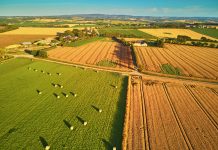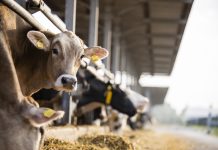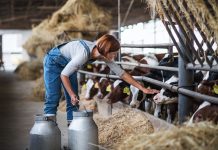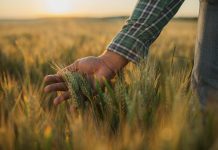Researchers at UTSA have developed an AI-powered optical microscope system that enables fast, low-cost soil health testing by detecting fungal biomass, helping farmers make smarter, sustainable land management decisions
Researchers at The University of Texas at San Antonio have developed an AI-powered microscope system that makes soil health testing faster, cheaper, and more accessible. By combining low-cost optical microscopy with machine learning, the new technology is designed to be user-friendly and practical, providing farmers with a tool that is not only effective but also easy to use, ensuring that soil health monitoring and enhancement is within reach for all farmers.
Unlocking vital insights into soil fungi
Soil fungi, as the unsung heroes of the agricultural world, play an essential role in the biogeochemical cycling of nutrients, water retention, and ultimately, plant growth. With this knowledge, farmers can optimise crop production and sustainability by making informed decisions about soil management, including fertiliser application, irrigation, and tillage. This understanding underscores the crucial role of the agricultural sector in ensuring food security and sustainability.
Optical microscopes are the oldest design of microscope and have long been used to discover and identify tiny organisms in the soil. Other forms of soil testing employ techniques such as phospholipid fatty acid testing and DNA analysis to detect organisms, or they measure the presence of essential chemicals like nitrogen, phosphorus, and potassium. These modern methods tend to be costly or emphasise chemical composition, often overlooking the full biological complexity of soil ecosystems.
Alec Graves from The University of Texas at San Antonio College of Sciences, USA, is presenting the research at the Goldschmidt Conference this week. He said: “Current forms of biological soil analysis are limited, requiring either expensive laboratory equipment to measure molecular composition or an expert to identify organisms by sight using laboratory microscopes. Comprehensive soil testing isn’t widely accessible to farmers and land managers, who need to understand how agricultural practices impact soil health.
“Using machine learning algorithms and an optical microscope, we’re creating a low-cost solution for soil testing that reduces the labour and expertise required, while providing a more complete picture of soil biology.”
A machine learning algorithm to detect fungi
During the early phases of their design process, the researchers focused on developing and rigorously testing a machine learning algorithm specifically designed to detect fungal biomass in various soil samples. This involved a comprehensive approach to training the algorithm on a vast dataset, comprising several thousand meticulously captured photographs of fungi obtained from soils in South Central Texas.
To facilitate the practical application of their findings, the team integrated the algorithm into a user-friendly software platform designed for the efficient labelling and analysis of microscope images. This specialised software enables researchers and students alike to accurately identify and categorise different types of fungi observed in their samples.
Importantly, the software is compatible with a range of microscopes that offer total magnifications of 100x and 400x. These magnifications are standard in many widely available and affordable microscope models, making them accessible for use in various educational settings, such as school laboratories. By ensuring compatibility with off-the-shelf equipment, the researchers aim to democratise access to advanced fungal detection techniques, thereby facilitating further research and education in mycology and soil health.
“Our technique analyses a video of a soil sample, breaking this into images, and uses a neural network to identify and quantify fungi,” says Graves. “Our proof-of-concept can already detect fungal strands in diluted samples and estimate fungal biomass.”
The team is diligently working on integrating their innovative technique into a mobile robotic platform specifically designed for detecting fungi in soil environments. This advanced system will combine several critical functions: it will facilitate the efficient collection of soil samples, employ microphotography for detailed imaging of fungal structures, and conduct thorough analysis of the captured data—all within a single, compact device. The goal is to create a fully developed and operational device that can be easily deployed in various field settings. The team is optimistic about their timeline and aims to have this revolutionary device ready for comprehensive testing within the next two years.The team is currently working on integrating their technique into a mobile robotic platform designed to detect fungi in the soil. This system will merge sample collection, microphotography, and analysis into a single device. They aim to have a fully developed and deployable device ready for testing within the next two years.











